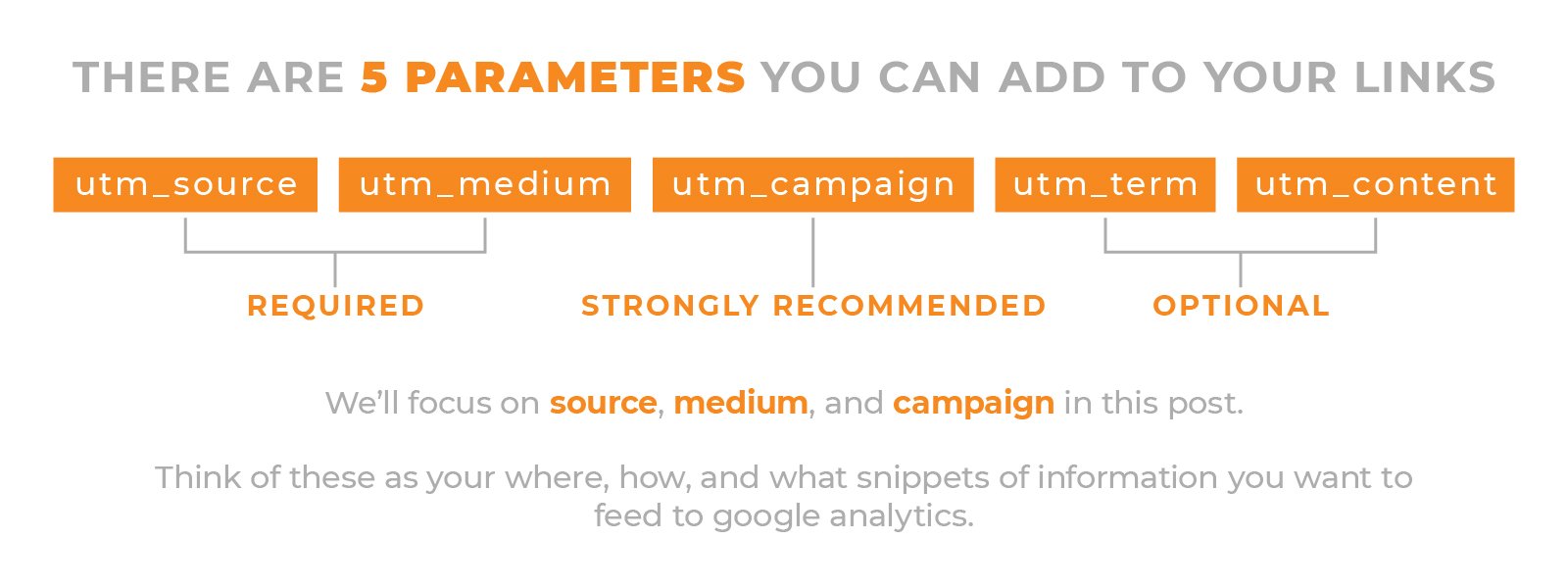You may have heard the term UTMs or UTM Parameters when talking about tracking your marketing campaigns, but what exactly are they, and what does UTM stand for?
The History Behind UTM Parameters
In 2005, Google acquired Urchin Software Corp, which had designed a software used for web analytics called Urchin. UTM stands for Urchin Tracking Module. No, they aren’t actually referring to a spiny sea creature or a mischievous child! Simply put, UTM Parameters are snippets of information that help track your marketing efforts from various sources. They were created to track behaviors of unique website visitors.
If not used properly, UTMs can make analyzing Google Analytics data difficult. Let’s dig a little deeper to see how best to utilize UTMs to get the most data out of your marketing efforts.
How does Google Analytics use UTM parameters?
While Google Analytics tracks valuable information from users who reach your site, UTM parameters offer an additional layer of data you wouldn’t otherwise get. When utilizing the technology available via UTM parameters and a user clicks that link, the parameters will be sent to Google Analytics. You are essentially giving more information for Google Analytics to track, so you will get more bang for your buck with their Acquisition features.
3 Main UTM Parameters
Source tells you where your traffic is coming from (i.e. facebook, google, direct).
Medium tells you how your traffic is getting there (i.e. organic, ppc, referral, social, email).
Campaign will reflect what marketing campaign users are engaging with (i.e. october2020, remarketing, rewardslaunch). You can manually set the campaign parameter on any link, or it can pre-populate from any of your Google Marketing Platform advertising accounts if you have linked those to Google Analytics.
Google Analytics collects the data you include in your UTM parameters, processes it, and populates your final reporting views. The Source and Medium values are particularly important, as Google will sort them into a Default Channel Grouping for faster data analysis. According to Google support, “Channel Groupings are rule-based groupings of your traffic sources. Throughout Analytics reports, you can see your data organized according to the Default Channel Grouping, a grouping of the most common sources of traffic, like Paid Search and Direct. This allows you to quickly check the performance of each of your traffic channels.”
Harness the Magic of Urchins
Imagine you run a business that is preparing for multiple promotions, and you choose to send an email to advertise each of these sales. All of your email links land on the same page of your website. Without UTM parameters on your links, all those users are going to come to your site and may appear to be “Direct” traffic, which is incorrect. While some email platforms may auto-tag links and appear as “Email” traffic in Google Analytics, they may lack more detailed campaign information available with a UTM. Wouldn’t it be nice to “magically” know if the users clicked on the email specials for Labor Day, or Father’s Day, or any other campaign you may be running? Urchins can help!
Sure, you can see the traffic came from email, but in order to know which campaign, image, or email generated the most traffic in Google Analytics, you will need to have used UTM parameters. Consistent use of these helpful tools will help you better understand your audience and drive more comprehensive and successful marketing campaigns.
Adopt Urchins Today
With the help of Google’s URL Builder Tool, you can easily create links with Urchins of your own.
More data is always better than less. The key is knowing how this extra data can help you respond to what your audience actually wants to see, instead of just guessing what will resonate with them. With the help of UTM parameters, you’ll have a much more comprehensive view of user interactions within your marketing campaigns and websites.
For help with campaign tracking and other analytics questions, the Performance Analytics Team is here. We are always eager to dive in and find answers hiding in your data.
Contributed by Megan Ankerson, Performance Analytics Manager
Citation: https://support.google.com/analytics/answer/6010097, 10/14/2020
INDUSTRY INSIGHTS
Blog Posts
How Weather-Based Advertising Keeps Your Crews Busy Year-Round
Discover how weather-triggered digital advertising helps home service companies reach customers when demand is highest and keep leads flowing all year long.
Why Local Visibility Is the Lifeline of Every Home Services Business
Learn how home service companies can boost leads through local visibility on trusted news and information sites like MLive.com.
6 Proven Marketing Tips to Keep Your Home Services Business Growing
From local SEO to weather-based ads, discover six marketing tips that help home service companies attract more leads and keep their crews busy year-round.
WE'RE HERE TO HELP
Grow Your Business
The MLive Media Group of today drives Michigan businesses to greater success. Contact us with any opportunities for us to help you.




 Ad Choices
Ad Choices
